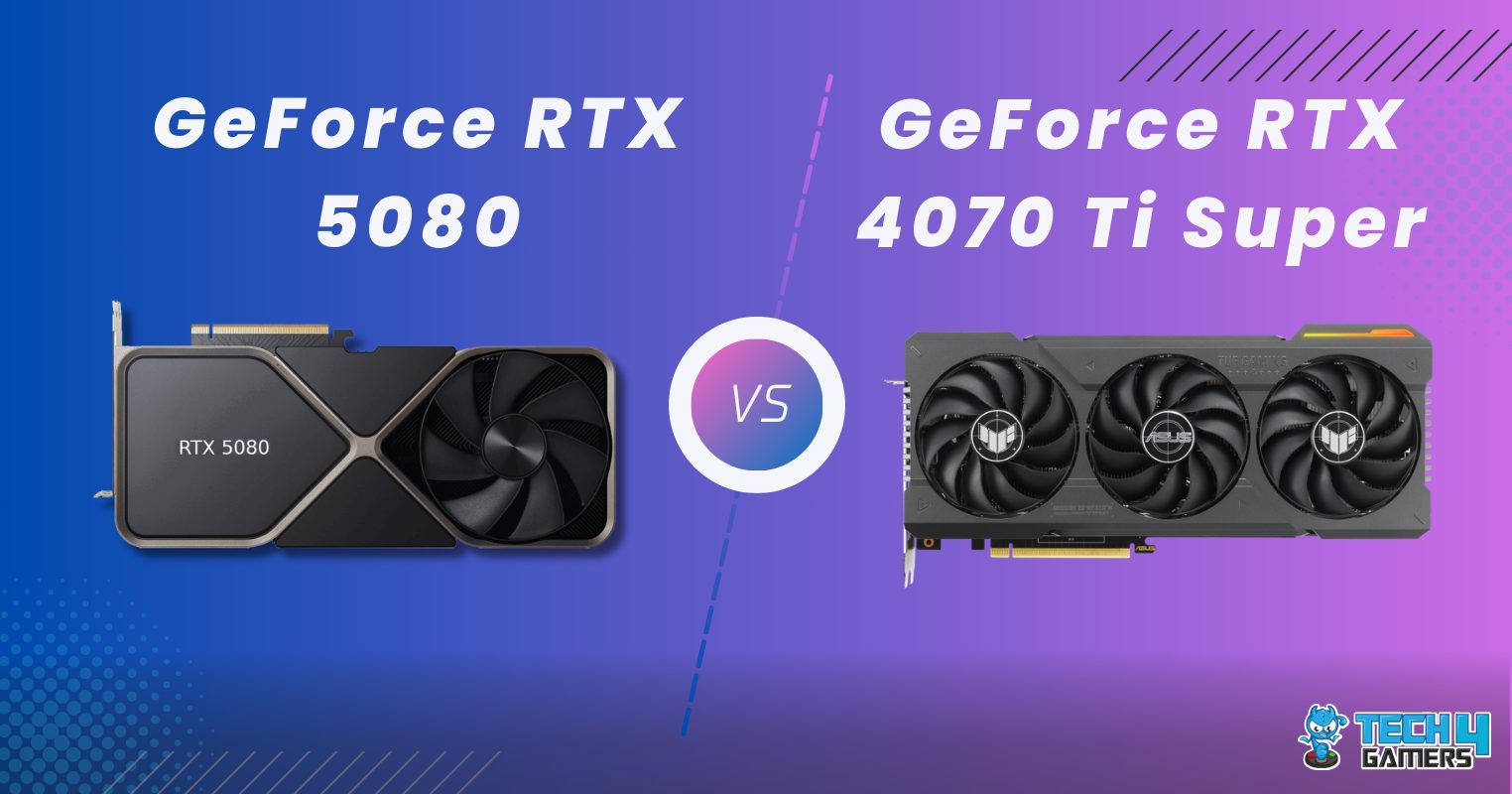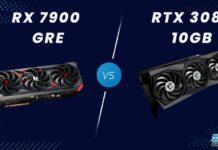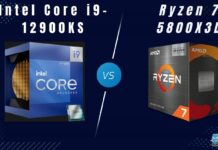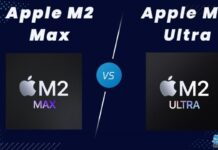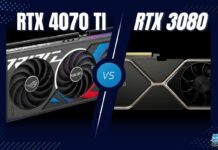MSI MPG X870E Edge Ti WiFi
Pros And Cons
| GPU | Pros | Cons |
|---|---|---|
| RTX 5080 | ✅ Has 27% more shading units ✅ Supports Nvidia DLSS 4 technology | ❌ Much more expensive |
| RTX 4070 Ti Super | ✅ Significanlty cheaper ✅ Lower power consumption | ❌ Worse in terms of performance |
Comparison Table
| Feature | RTX 5080 | RTX 4070 Ti Super |
|---|---|---|
| Architecture | Blackwell 2.0 | Ada Lovelace |
| Shading Units | 10752 | 8448 |
| Texture Mapping Units (TMUs) | 336 | 264 |
| Render Output Units (ROPs) | 112 | 96 |
| Compute Units (Pipelines) | 84 | 66 |
| Tensor Cores | 336 | 264 |
| Ray-tracing Cores | 84 | 66 |
| Fabrication Process | 4 nm | 5 nm |
| Die Size | 378 mm² | 379 mm² |
| Transistor Count | 45.6 billion | 45 billion |
| Best Variants | - | Best RTX 4070 Ti Super Graphics Cards |
Architectural Differences
- Process Nodes: The RTX 4070 Ti Super’s 5nm processing nodes have been switched out for a 4nm process with the RTX 5080 and the rest of the Blackwell Family.
- Clock Speeds: The RTX 4070 Ti Super has a base clock of 2340MHz and a boost of up to 2610MHz, while the RTX 5080 clocks anywhere from 2295MHz to 2617MHz.
- VRAM: Both cards support a 16GB VRAM buffer, though the RTX 5080 has the edge with the GDDR7 technology it employs.
- TDP: The rated TDP of the RTX 4070 Ti Super is 285 watts, which is noticeably lower than the 360-watt TDP of the RTX 5080.
- Supported Technologies: Newer technologies that the RTX 5080 has include better ray reconstruction, ray tracing, a brand new rendering technique, and improved frame generation.
The Super series cards from the last generation brought the Ada Lovelace cards closer to what we expected from them. The Blackwell cards bring another disappointment from Nvidia, so let’s see how these implementations stack up in the RTX 5080 Vs RTX 4070 Ti Super comparison!
Gaming Benchmarks – 4K
Having gone over the specification difference between these two cards, this next set of benchmarks will determine how they perform in gaming tests. These benchmarks will be performed on a stable test bench, the specifications of which you can check out below:
Test Bench
- CPU – AMD Ryzen 7 9800X3D
- Mobo – MSI MPG X870E Edge Ti WiFi
- RAM – G.Skill Trident Z5 Neo RGB 32GB DDR5-6000 CL30
- Storage: Sabrent Rocket 4 Plus 1TB NVMe SSD
- CPU Cooler: Corsair iCUE H150i Elite Capellix XT
- Power Supply: Enermax Revolution D.F. X 1050W
- Operating System – Windows 11
Marvel Rivals

- The RTX 5080 delivered 65 FPS on average in our test of Marvel Rivals, significantly outpacing the RTX 4070 Ti Super’s 48 FPS. This comes out to a 35.42% performance boost for the newer card.
- In 1% lows, the RTX 5080 maintained 41 FPS, while the 4070 Ti Super dipped to 32 FPS, making the frame drop 28.13% worse on the older card.
Stalker 2

- With an average of 48 FPS, the RTX 5080 held a 23.08% lead over the RTX 4070 Ti Super’s 39 FPS when we tested Stalker 2 with the same settings on both cards.
- The lows are where the difference was even more noticeable, with the RTX 5080 at 41 FPS while the 4070 Ti Super falls to 30 FPS, resulting in 36.67% more severe dips.
God of War Ragnarok

- The RTX 5080 ran at around 117 FPS, netting a 27.17% increase over the RTX 4070 Ti Super’s 92 FPS in our testing of God Of War Ragnarok.
- Even during the most demanding scenes, the 5080 held 98 FPS, while the 4070 Ti Super dropped to a less impressive 81 FPS, a 20.99% gap instability.
War Hammer 40K: Space Marine 2

- The RTX 5080 achieved 85 FPS in Space Marine 2, towering over the RTX 4070 Ti Super’s 60 FPS for a very significant 41.67% increase in performance during our testing.
- The lows tell a harsher story for the Ada Lovelace, which fell to 50 FPS, while the RTX 5080 maintained a smoother 75 FPS as its lows, meaning dips were about 50% worse on the older card.
Star Wars Jedi: Survivor

- At 69 FPS, the RTX 5080 had a 32.69% advantage over the RTX 4070 Ti Super in our testing of Star Wars Jedi Survivor, which ran at 52 FPS on the older card.
- In heavier sequences, the RTX 5080 managed 1% lows of 58 FPS, while the 4070 Ti Super dropped to 41 FPS, meaning 41.46% deeper drops in performance.
Alan Wake 2 (RT + DLSS Q)

- High ray tracing bogged down the performance of the RTX 5080 to 38 FPS on average in Alan Wake 2, while the RTX 4070 Ti Super was 35.71% behind in our testing with an average of 28 FPS.
- The 1% lows were rough on the 4070 Ti Super, sinking to 22 FPS, while the RTX 5080 stayed 41% faster at 31 FPS, which is better yet still underwhelming.
Cyberpunk 2077 (RT + DLSS Q)

- The RTX 5080 ran at 50 FPS, keeping ahead of the RTX 4070 Ti Super’s 41 FPS by 21.95%, making Night City a bit more fluid.
- In the most taxing scenes, the RTX 5080 held 41 FPS in our test, while the 4070 Ti Super struggled at 32 FPS, leading to 28.13% deeper frame drops.
Black Myth: Wukong (RT + DLSS Q)

- The RTX 5080 held 39 FPS, delivering a 34.48% increase over the RTX 4070 Ti Super’s 29 FPS in our test of Black Myth Wukong with the RT set to very high.
- The lows tell a similar story, with the 5080 at 29 FPS, while the 4070 Ti Super drops to 22 FPS, making its frame dips 31.82% worse.
Productivity Benchmarks
Now that we have taken a tour of the performance of these cards in games, this section of the RTX 5080 Vs RTX 4070 Ti Super will show you our testing of the productivity performance of these cards. The following tests have been done with the same setup we used for the gaming benchmarks.
Blender Barbershop

- In our Blender Barbershop render, the RTX 5080 finished the job about 22% quicker than its rival.
- Nvidia’s RTX 5080 finished the render in 41 seconds, while the RTX 4070 Ti Super finished the same render in 50 seconds.
Davinci Resolve

- Davinci Resolve ran about 20% better on the RTX 5080 using the Pudget Systems benchmark when we tested both of these cards.
- The RTX 5080 scored 11273 points, whereas the RTX 4070 Ti Super was noticeably slower, with a performance of 9394 points.
Premiere Pro

- Finally, our Premiere Pro test ran about 11% better on the newer card. These improvements with the newer card can be attributed to its beefier die, as well as the new 4:2:2 encoding.
- We saw a score of 14252 points with the RTX 5080, whereas the 4070 Ti Super got a performance of around 12868 points.
Overall Performance
| GPU | RTX 5080 | RTX 4070 Ti Super |
|---|---|---|
| Average FPS | 📈63.87 | 📈48.62 |
| 1% Lows | 📉51.75 | 📉38.75 |
| Productivity (Rating) | ✏️9/10 | ✏️8.2/10 |
| Winner: RTX 5080 | ||
Average Framerate
In the eight games we tested, the RTX 5080 performed significantly better than the RTX 4070 Ti Super. On average across all these games with and without RT, we saw an advantage of around 31% with the RTX 5080. This made a lot of the games go from a playable performance to something smooth and enjoyable.
1% Lows
Our tests of the minimum framerates just repeated what we saw with the averages. The RTX 5080 got an average of around 34% more performance than the RTX 4070 Ti Super, though both cards usually dipped below 60 FPS in most games.
Productivity
The performance of the RTX 5080 was also significantly better in the productivity tests, with an average improvement of about 15% over the RTX 4070 Ti. Mind you, the RTX 5080 is a tier higher and a generation newer than the RTX 4070 Ti Super, so these results aren’t all that impressive.
Power Consumption
| Power Consumption | RTX 5080 | RTX 4070 Ti Super |
|---|---|---|
| Idle | 21⚡ | 13⚡ |
| Gaming | 326⚡ | 297⚡ |
| Ray Tracing | 333⚡ | 289⚡ |
| Maximum | 376⚡ | 311⚡ |
| Winner: GeForce RTX 5080 | ||
Our tests showed that the RTX 5080 took about 10% more power on average when gaming, though the newer card reached a peak that was about 21% higher than that of the RTX 4070 Ti Super.
Price
| GPU | RTX 5080 | RTX 4070 Ti Super | Price Difference |
|---|---|---|---|
| Launch MSRP | 💲999 | 💲800 | 24.88% |
| Current Price | 💲999 | 💲849 | 17.67% |
At the time of writing this article, the RTX 5080 has gotten its first price hike. Whether it be scalping or silicon shortages, the price of these cards goes up and up to an unreasonable extent. The RTX 5080 is about 135% more expensive than the RTX 4070 Ti Super because of this reason.
What We Recommend
RTX 5080: The RTX 5080 offers a measurable performance improvement over its competitor, though the price difference does offset this improvement. If the quadrupling of framerate that can happen because of DLSS 4 justifies the double price of this card, then this purchase can make sense.
RTX 4070 Ti Super: The RTX 4070 Ti Super’s performance is lacking in 4K gaming with all the settings turned up, but turning down a few things might give you great performance at this resolution. The price is still high, but it’s miles better than the RTX 5080.
In our analysis, the RTX 5080 suits high-end gamers and creators who prioritize performance over cost. The RTX 4070 Ti Super is still for the high-end but for people who care about how much they get for their money. The RTX 4070 Ti is the better card for most people.
No, the RTX 5080 has about 27% more shading units or CUDA cores than the RTX 4070 Ti Super. The RTX 5080 has a suggested PSU of 750 watts, which is significantly higher than the 600-watt suggestion of the RTX 4070 Ti Super. Yes, the RTX 5080 has 3 DP 2.1b connections, whereas the RTX 4070 Ti Super has 3 DP 1.4a connections. The RTX 5080 and RTX 4070 Ti Super both have a single 16-pin power connector. Yes, the RTX 5080 has a PCIe 5.0 by 16 connection, whereas the RTX 4070 Ti Super has a PCIe 4.0 by 16 connection. FAQs
More From RTX 5080 More From RTX 4070 Ti Super
Thank you! Please share your positive feedback. 🔋
How could we improve this post? Please Help us. 😔
[Comparisons Specialist]
I’m a passionate computer hardware expert specializing in CPUs and GPUs. With a lifelong curiosity for hardware and extensive hands-on experience, I provide valuable insights, practical advice, and in-depth analysis on these components. Engaging with the hardware community, I exchange knowledge and stay at the forefront of technological advancements.
Get In Touch: uzair@tech4gamers.com


